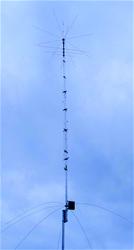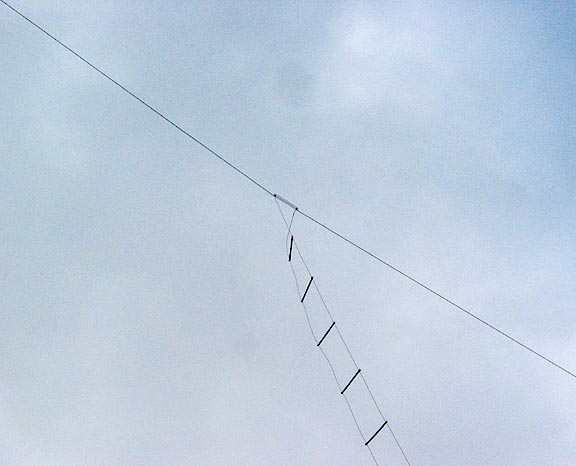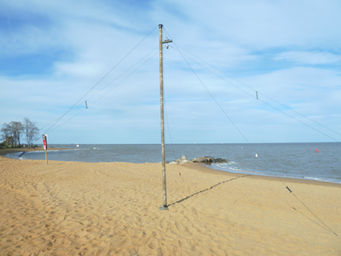CommoFreq
Member
Hello everyone!
I just wanted to post a bit more "newbie" info on antennas, because as I've said before - they are more important than the radio itself. So, here's sort of an overview on the different types of antennas out there, and we have different types in the first place.
Think of antennas as "tools". You don't use a hammer to turn a screw, for example. Each type of antenna has its own purpose, depending on what it is that you're trying to do. And I'm going to use HF as an example, because that's where you find the most variety.
If you want me to explain different antennas for the higher frequencies, such as VHF or UHF, just ask and I'll do up a post on that.
0 - 30 MHz
(The HF Band - I call this, the "Rubber Band")
Yes, it's in this frequency range that you'll find the most variety as far as antenna types go. These are your "lower" range radio waves (even though "HF" stands for "high frequency"). Confused yet? Yes, they're actually "low" frequencies, and as such, they act like rubber. They bounce off of the atmosphere and back down to Earth. These waves bounce off of virtually everything, except for sand. How you want them to bounce when you transmit, depends on the antenna you will use!
Vertical Antennas

These will get you maximum range. And it doesn't have to look like what's pictured here. It can even be a vertical piece of wire too!
When you transmit, your radio signal goes straight out toward the horizon. Since Earth is more of a curved kind of thing, this straight path toward the horizon, will keep going straight, as Earth starts to curve down and away from it. Eventually, it will hit the ionosphere, and bounce back down again. And because it's going straight out, the angle at which it hits the ionosphere, is the maximum angle possible, providing for the largest-length "hops".
Yes, "hops", as in "more than one". . . apparently after it bounces back to the ground, doesn't mean it won't bounce off of the ground and back up again. This is true for all HF antennas. Just know that water reflects radio signals much better than land does. I'm jealous of anyone who lives next to the ocean.
Pros :
Cons :
Dipole Antennas

These types of antennas are almost always two pieces of very long horizontal wire. They can be fed with coax cable, or "ladder line" as you see in this picture. And for the record, "ladder line" is better than coax.
When you transmit with a dipole, the signal is a bit more "spread out". That means that some of it will be long range, like your vertical antenna, and some of it will be shorter range as well. From a technical standpoint, since a piece of wire is "round" when looking down the length of it, well, that's how your radio signals are going out too. Some are going straight up, some are hitting the ground, some are going out of the sides. Think of a magnet in a pile of iron filings, but in 3D.
Pros:
This antenna is "multipurpose". Your radio signal is evenly divided out to hit the ionosphere at all angles (well, not quite, but we'll keep it simple for now).
Cons:
It has to be high up off of the ground. I don't want to get too technical here, but if it's too low to the ground, well, the ground will absorb most of your signal before it has a chance to get out. It has to be a minimum of 30 feet off of the ground.
Near Vertical Incidence Skywave (NVIS) Antenna

These are pretty popular with EMCOMM and military, because they are designed for short range (500 miles or less). What this means is that the radio waves are "focused" or directed in such a way that they hit the atmosphere at a sharp angle, so that the "hop" distance is short. In the picture, you can see that the sides of the wires are pointing up toward the sky. The angle that the signal hits the ionosphere is smaller, and so, it comes down sooner.
So you have the same amount of energy going into this antenna as you would with the other ones. The results?
Pros:
Cons:
Hope this helps. You know the deal - questions and comments are welcome.
I just wanted to post a bit more "newbie" info on antennas, because as I've said before - they are more important than the radio itself. So, here's sort of an overview on the different types of antennas out there, and we have different types in the first place.
Think of antennas as "tools". You don't use a hammer to turn a screw, for example. Each type of antenna has its own purpose, depending on what it is that you're trying to do. And I'm going to use HF as an example, because that's where you find the most variety.
If you want me to explain different antennas for the higher frequencies, such as VHF or UHF, just ask and I'll do up a post on that.
0 - 30 MHz
(The HF Band - I call this, the "Rubber Band")
Yes, it's in this frequency range that you'll find the most variety as far as antenna types go. These are your "lower" range radio waves (even though "HF" stands for "high frequency"). Confused yet? Yes, they're actually "low" frequencies, and as such, they act like rubber. They bounce off of the atmosphere and back down to Earth. These waves bounce off of virtually everything, except for sand. How you want them to bounce when you transmit, depends on the antenna you will use!
Vertical Antennas

These will get you maximum range. And it doesn't have to look like what's pictured here. It can even be a vertical piece of wire too!
When you transmit, your radio signal goes straight out toward the horizon. Since Earth is more of a curved kind of thing, this straight path toward the horizon, will keep going straight, as Earth starts to curve down and away from it. Eventually, it will hit the ionosphere, and bounce back down again. And because it's going straight out, the angle at which it hits the ionosphere, is the maximum angle possible, providing for the largest-length "hops".
Yes, "hops", as in "more than one". . . apparently after it bounces back to the ground, doesn't mean it won't bounce off of the ground and back up again. This is true for all HF antennas. Just know that water reflects radio signals much better than land does. I'm jealous of anyone who lives next to the ocean.
Pros :
- You get the most distance
- It can stretch all the way to the ground (other antennas must be high up, off of the ground)
Cons :
- The "most distance" is all you get. You won't get anything else. The farther the distance your signal goes out, the weaker it will be to someone on the other end, on another continent somewhere, unless that person is sitting in that sweet spot, where the first or second hop is coming back down to the ground again. Most people out there, do not fall into this category, by the way.
- What that means is, you're going to be "shooting over" a lot of heads out there. People who are nearer, will hear nothing. It's for long range only.
Dipole Antennas

These types of antennas are almost always two pieces of very long horizontal wire. They can be fed with coax cable, or "ladder line" as you see in this picture. And for the record, "ladder line" is better than coax.
When you transmit with a dipole, the signal is a bit more "spread out". That means that some of it will be long range, like your vertical antenna, and some of it will be shorter range as well. From a technical standpoint, since a piece of wire is "round" when looking down the length of it, well, that's how your radio signals are going out too. Some are going straight up, some are hitting the ground, some are going out of the sides. Think of a magnet in a pile of iron filings, but in 3D.
Pros:
This antenna is "multipurpose". Your radio signal is evenly divided out to hit the ionosphere at all angles (well, not quite, but we'll keep it simple for now).
Cons:
It has to be high up off of the ground. I don't want to get too technical here, but if it's too low to the ground, well, the ground will absorb most of your signal before it has a chance to get out. It has to be a minimum of 30 feet off of the ground.
Near Vertical Incidence Skywave (NVIS) Antenna
These are pretty popular with EMCOMM and military, because they are designed for short range (500 miles or less). What this means is that the radio waves are "focused" or directed in such a way that they hit the atmosphere at a sharp angle, so that the "hop" distance is short. In the picture, you can see that the sides of the wires are pointing up toward the sky. The angle that the signal hits the ionosphere is smaller, and so, it comes down sooner.
So you have the same amount of energy going into this antenna as you would with the other ones. The results?
Pros:
- Everyone in this "short range" radius is going to hear you very, very well. You've effectively taken most of your "energy" and focused it to a smaller area. Think of burning ants with a magnifying glass - that's also kind of how radio waves work as well.
Cons:
- Nobody else will.
Hope this helps. You know the deal - questions and comments are welcome.
